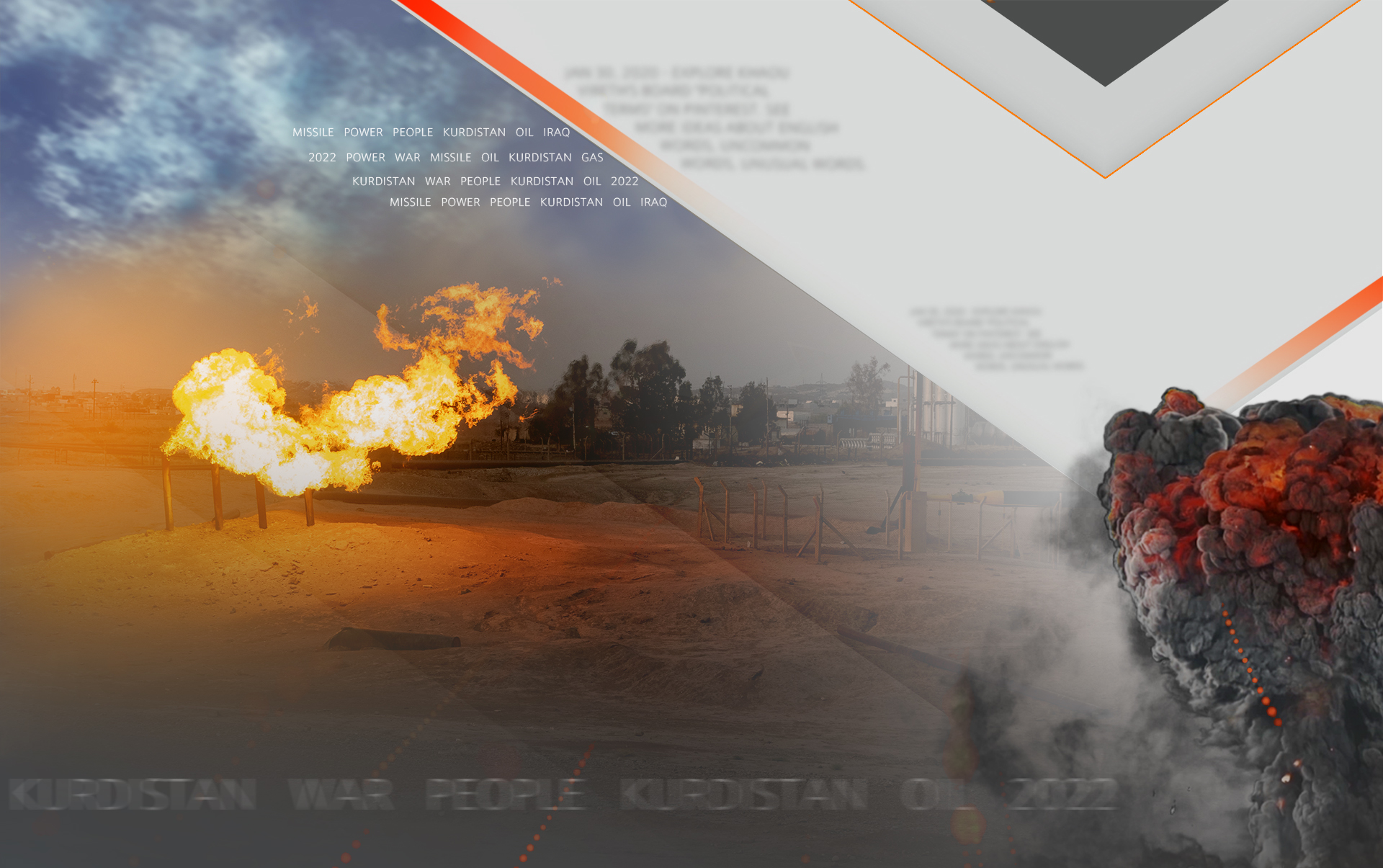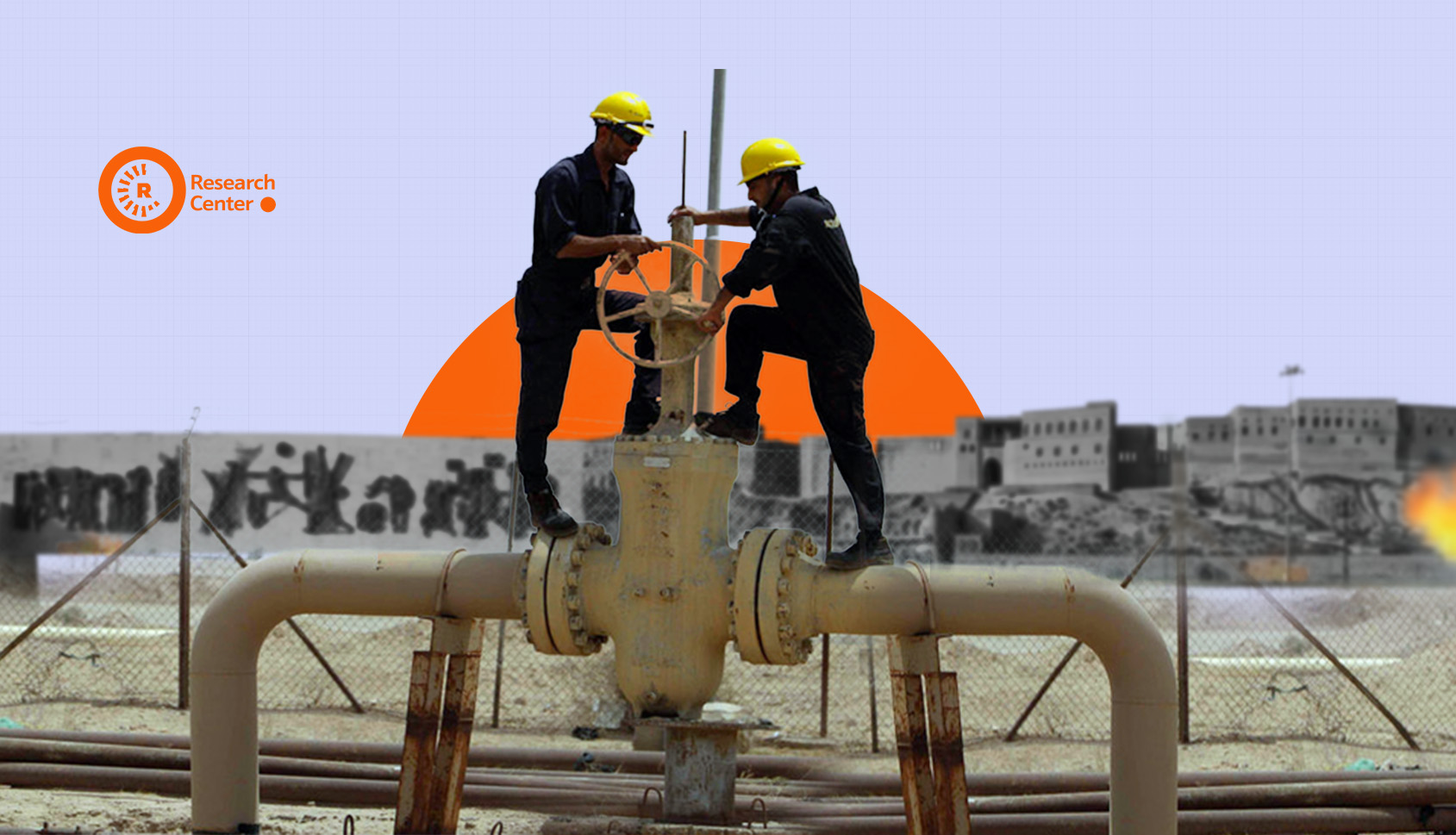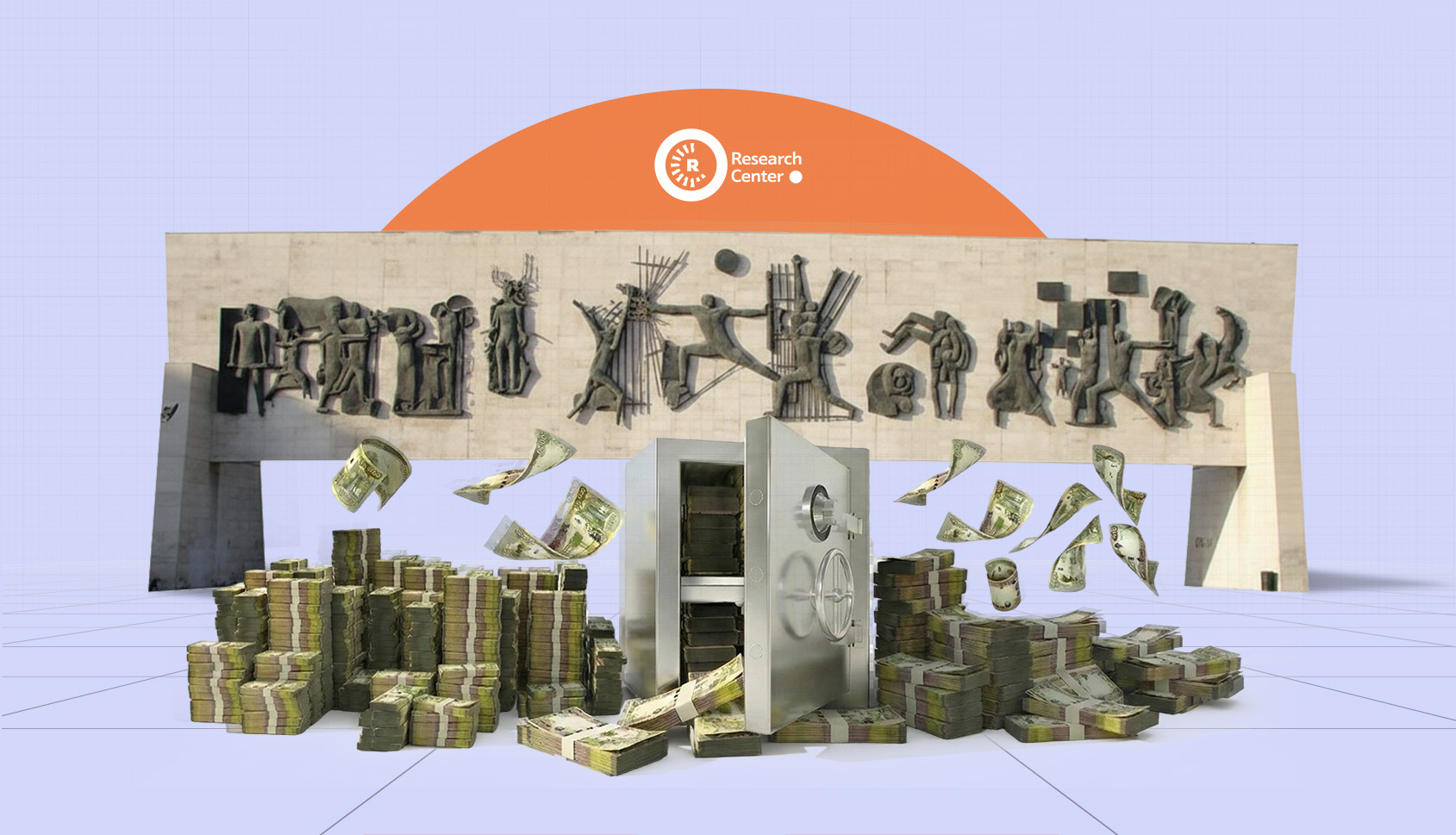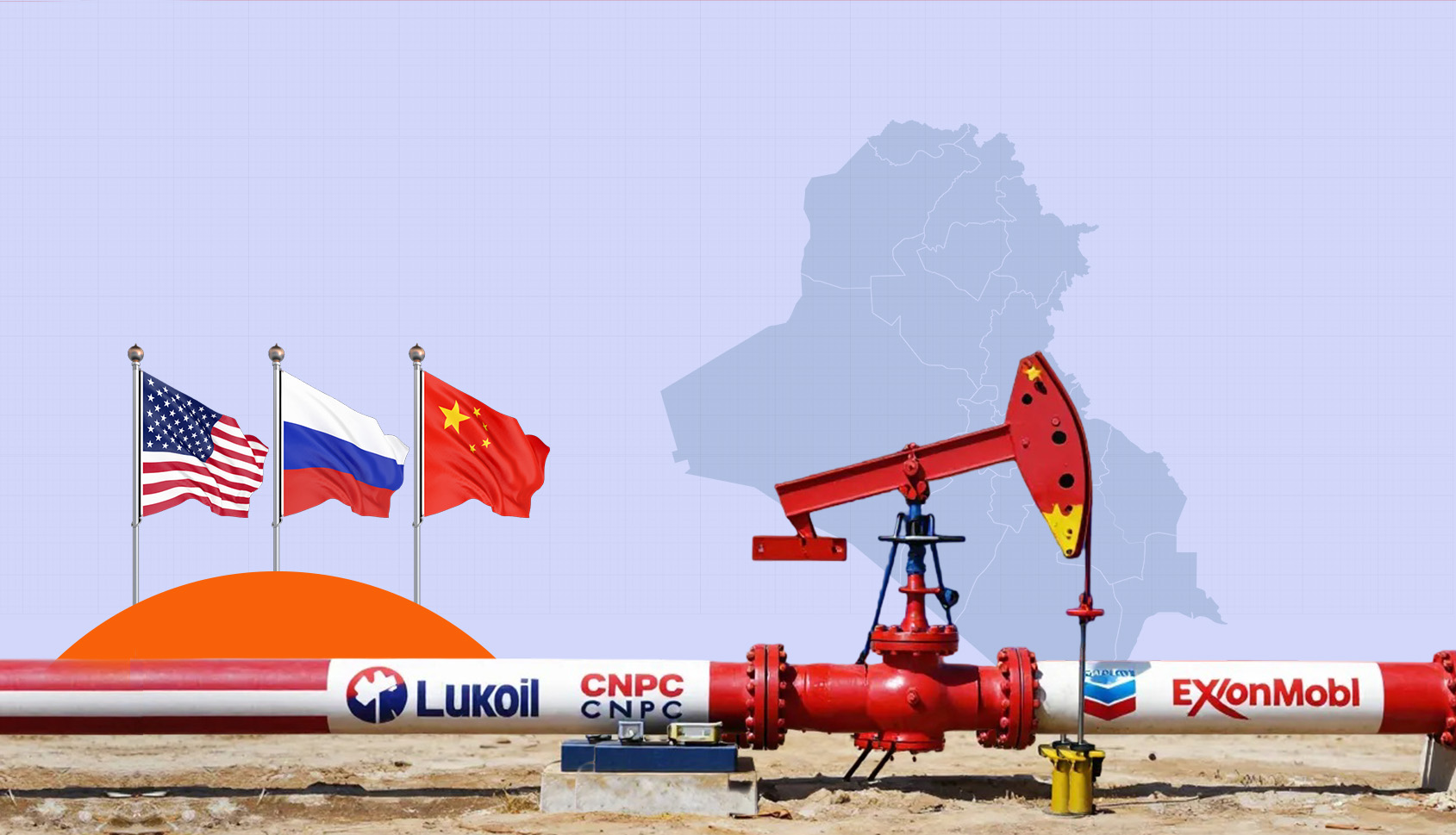Topics
Attacks conducted by “illegal” Iraqi armed groups are increasing on oil and gas investments in the Kurdistan Region. According to reports, companies operating in the oil and gas sector in the Kurdistan Region have been forced to work with less staffing. Dana Gas has remained the minimum number of employees in the Khormore field to maintain the current production level. If immediate measures are not adopted in this matter, it will receive an extensive impact on increasing production. On the other hand, it may pose a serious human, economic and environmental threat to the Kurdistan Region.
The recent attacks on the oil refineries and the Khormore gas field must be taken seriously to prevent a terrible catastrophe because any small explosion in the oil or gas tanks produces a major disaster in terms of water, soil, and air poisoning, which will have a full impact on the residents of the areas near fields and refineries. This is not to mention the hundreds of millions of dollars in economic damage that could destroy the massive infrastructure of the oil and gas industry that is being built over many years.
In the event of any, such disaster, the Kurdistan Region and Iraq do not have advanced logistical capabilities capable of controlling these types of disasters. For example, when ISIS blew up the oil wells in Qayyarah, the equipment needed to conduct the blast was brought in from Kuwait about eight months later. It caused the spread of dozens of harmful substances such as carbon dioxide, sulfur, nickel, etc., in the air, water, and soil of the area.
Human, economic and environmental damage
The extent of the damage depends on the probability of the accident, whether it is in a gas and oil field or any other type of accident. For example, the damage caused by ISIS in the Qayyarah oil field, whose fire lasted for more than eight months was because of the lack of equipment to confront this fire. As a result of these fires during that period, the volume of emissions was estimated at 133 million tons of carbon dioxide in the soil, air, and water. There were, furthermore emissions of other toxic gases such as sulfur dioxide [2]. Because of the lack of the necessary equipment in Iraq to confront this type of fire, Kuwait announced that it would deliver the necessary equipment to Iraq to confront these fires, and on December 2, 2016, the firefighting equipment for the Qayyarah oil fields arrived from Kuwait [3].
The Qayyarah field at that time was producing about 30,000 barrels daily and was supposed to increase production to 200,000 before the fire broke out. There were other damages as well, such as:
Humanitarian Aspect:
- Lives of 15,000 residents of Qayyarah became in danger.
- Hundreds of people were evacuated due to fire and smoke. [4]
- Residents of Mosul, only 40 kilometers from the source of the fire, faced health risks
- According to the United Nations, millions of people have been exposed to toxic gases [5]
- A considerable number of people, especially children, suffered from breathing problems and pneumonia due to the release of smoke and toxic gases and it persisted even after the fire was brought under control [6]
- Diffusion of oil and gas in the air and land [7]
Economical Aspect:
- The Iraqi Oil Ministry estimated the damages at hundreds of millions of dollars.
- Of a total of 50 wells, ISIS burned 18 of them and damaged 34 wells [8].
- Many livestock died due to environmental pollution
- Plant crops and other crops have been damaged by acid rain due to the release of smoke and harmful gases such as sulfur dioxide into the air
- Oil production stopped for two years
- The initial plan was to produce 120 thousand barrels of oil per day, but in 2021 it produced only 55 thousand barrels. [9]
Environmental Aspect:
- The fire got out of control for a period of months and smoke covered more than 250 square kilometers for 21 days
- About 20 thousand square meters were damaged due to the fire and oil spill [10]
- The release of harmful substances into the air, soil, and water that caused pollution in the Tigris River
- Damaged agriculture in the area
- Destruction of fish and water resources in the Tigris Rive
- Eric Slim, head of the United Nations Environment Program, interpreted the effects of the continuing fire as “a precursor to a long-term environmental catastrophe with long-term effects” [11]
- Oil and gas field fires result in harmful gases such as carbon dioxide, nitrogen dioxide, and sulfur dioxide in addition to harmful substances such as nickel, vanadium, and lead [12]
Increasing security risks on the oil and gas industry
From March of this year until June 26, 2022, six missile attacks were carried out on the infrastructure of the oil and gas industry in the Kurdistan Region (refineries and gas fields). The most dangerous attack was on May 1, 2022, when it targeted an oil tank belonging to the Kar group in the Kaurgosk refinery, and only a missile strike the top of the tank. If the missile hit the bottom of the warehouse, it would have been a disaster that could not be controlled, but fortunately, it was managed. The Khormore gas field was also targeted three times in just 72 hours.
Since 2007, work is being done to develop, expand and increase the production of the Khormore field. In the past few days, drilling of a new gas well was completed out of the price of new wells, and this is within the plan to increase production until April 2023. However, the attacks adversely affected the expansion works and increased production.
Another point that local and international companies care about is risk assessment, and now the risks of attacks have increased in addition to other risks, such as the Federal Court’s decision, and security risks have become at the forefront of threats after they were at the bottom of the ranking in 2019.
Increasing security risks not only affect the work of local and international companies but equally significantly affect foreign investment, current expansion projects, and investment costs for companies in the fields in which they operate. For example, Dana Gas is currently planning to drill eight new wells producing gas for another 250 million cubic feet by April 2023 and is now reviewing itself and facing obstacles from the work of foreign experts and even its staff, so it is operating with minimal staff to maintain production levels.
There are different interpretations of the purpose of the attacks, whether political, economic or security. But rockets fell near the Kar Refinery in Kaurgosk, which can refine 90,000-120,000 barrels of oil, depending on the quality of oil refining, and which has the most recent technology used to filter the oil. In addition to oil refining, the field aims to supply gasoline to the local market in the Kurdistan Region and other Iraqi provinces. Each such incident causes billions of dollars in losses.
According to the data, the cost of any refinery to refine 1 barrel of oil per day is 25 thousand dollars, which means that the Kaurgosk field with a capacity of 100 thousand barrels of crude oil has a capital of about 2.5 billion dollars. If the attack had hit one of these warehouses, pipelines, or oil refining towers for petroleum products, hundreds of company employees and surrounding citizens would have been damaged!
On the other hand, the bombing of the Khormore gas field, which lasted for three days, may indicate that the goal is to keep the Kurdistan Region and even Iraq at the current level of gasoline and gas production and to continue to rely on imported gas and gasoline. For example, Iraq imported $1.204 billion worth of gasoline and $272 million in gas from December 1, 2022, to March 31, 2022, [4]. In 2021, I will import 2.54 billion dollars’ worth of gasoline and 657 billion dollars in gas, so it is sold at a subsidized price. During the first three months of this year, the Kurdistan Region lost $618 million for this reason. The Kurdistan region needs five to six million liters of gasoline per day [6], two-thirds imported from abroad, especially from Iran.
“Iran is planning to invade all of Iraq and put pressure on the oil industry in Erbil”
James Jeffrey
Jeffrey said in an interview with the Washington Institute about the recent attack on the Khormore field.
These pressures come at a time when the oil and gas industry in the Kurdistan Regional Government and international companies are undergoing a difficult period due to the decisions and statements of the Iraqi Federal Court and the Iraqi Ministry of Oil.
Therefore, Matthew Zeiss, Vice President of HKN and former Deputy Assistant Secretary of Energy, indicated in a report on the attacks, on the level of threats facing the oil and gas industry in the Kurdistan Region, and talks about the evolution of threats from domestic to international, especially in terms of production and export, and says, “There are two main challenges in The Kurdistan Region could have an additional impact on the oil market, the attacks, which are not yet taken as a political threat, and the attempts of the Federal Court against the Kurdistan Region Oil and Gas through the case brought by the government against Turkey before a French court, which is scheduled to be adjudicated in July. Currently, The Iraqi government is waiting to receive that case. Turkey may then stop exporting oil from the Kurdistan Region due to pressure, and if this is the case, it will erase or reduce 450,000 barrels of oil per day in the market, which will have a significant impact on prices in the market because it represents twice the quantity Which OPEC Plus has approved its increase, which is part of the agenda of Joe Biden’s visit to Riyadh next month” [8].
Initially, if the threat of these attacks is interpreted as only a pressure card or producing a crisis, then it should be taken seriously as of March of this year because it has entered a new phase, and as of May 2022, the infrastructure of oil refineries and in the past days have been targeted Gas production infrastructure, which represents a source of electricity for citizens.
Therefore, as we mentioned hitherto, the human, economic and environmental damage in the current situation in the Kurdistan Region and Iraq will be very large and will not be limited to now. It will have a significant impact on the air, soil, water, and surrounding areas, hundreds of thousands of people will be displaced from them, and health problems will occur, in addition to human and economic damages. And environmentally direct. Therefore, to prevent such a catastrophe from happening it is better to accept the methods below:
- Adopting a new approach to dealing with attacks.
- Informing the Iraqi government, Iraqi political centers, and neighboring countries about the risks
- Provide equipment and materials necessary to manage any accident.
- Unite efforts to prevent such a catastrophe.
- Coordination with international companies and informing global centers of the potential danger of such an accident
Perhaps the perpetrators of the attacks, whether did not explain the disasters that could be produced by the missile launches, otherwise, the human, economic and environmental damage will not only affect the government, the authorities, and the population in these areas only, but will additionally include water, air, and soil in all of Iraq.
At long last, the consequences of these attacks will not only affect the oil and gas industry in the Kurdistan region but will also put Iraq in a new phase in terms of the work of international companies.
Reference
[1] https://reliefweb.int/map/iraq/iraq-fires-al-qayyarah-oil-field-nineveh-governorate-between-18-july-2016-and-7-january
[2] https://www.climatechangenews.com/2017/08/23/photos-reveal-iraq-oil-fires-burning-behind-isis-retreat/
[3] https://www.rudaw.net/sorani/middleeast/iraq/031220161
[4] https://time.com/4542032/iraq-mosul-isis-qayyarah-mosul-oil-fires-sulfur/
[5] https://www.humanitarianresponse.info/sites/www.humanitarianresponse.info/files/documents/files/mosul_env_health_hazards_report_final_8nov.pdf
[6] https://diyaruna.com/en_GB/articles/cnmi_di/features/2017/02/21/feature-02
[7] https://paxforpeace.nl/media/download/pax-report-living-under-a-black-sky.pdf
[8] https://www.rudaw.net/english/business/27092018
[9] https://www.iraq-businessnews.com/list-of-oil-and-gas-fields-in-iraq/oil-and-gas-fields-qayara/
[10] https://paxforpeace.nl/media/download/pax-report-living-under-a-black-sky.pdf
[11] https://www.humanitarianresponse.info/sites/www.humanitarianresponse.info/files/documents/files/mosul_env_health_hazards_report_final_8nov.pdf
[12] https://paxforpeace.nl/media/download/pax-report-living-under-a-black-sky.pdf






